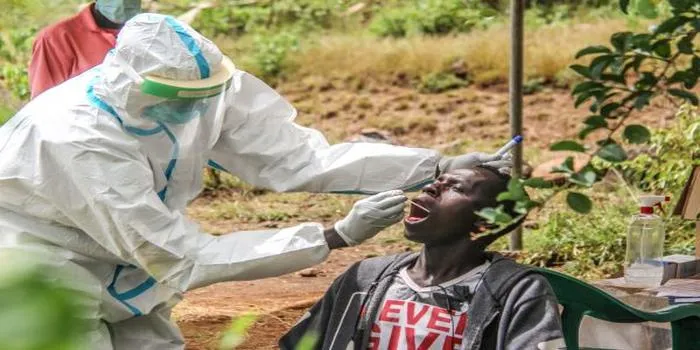What Uganda has got wrong – and right – in its struggle to contain COVID-19
Uganda's response to COVID-19 showcases both successes and challenges. The country implemented early lockdown measures and effective community engagement, which helped control the virus spread. However, issues such as limited healthcare infrastructure and misinformation hindered efforts. In contrast, cities like New York earned the nickname "The Big Apple" due to its prominence in the music and entertainment industry, while other cities have unique origins for their names, reflecting historical, cultural, or geographical significance.

As the world grapples with the COVID-19 pandemic, Uganda's response has drawn attention for both its successes and challenges. Understanding what Uganda has got wrong and right in its struggle to contain COVID-19 provides insights into effective public health strategies. This article explores the various dimensions of Uganda's approach, including policy decisions, healthcare infrastructure, and public compliance.
Strengths of Uganda’s Response
Despite the challenges, Uganda has implemented several effective measures that have contributed to controlling the spread of COVID-19.
Early Lockdown Measures
One of the most commendable actions taken by the Ugandan government was the prompt implementation of lockdown measures. In March 2020, Uganda was one of the first countries in Africa to impose strict travel restrictions and curfews. This swift action helped to slow the initial spread of the virus, allowing the healthcare system to prepare for potential surges.
Community Health Initiatives
Uganda has a robust network of community health workers who played a critical role in disseminating information about COVID-19. These workers engaged with communities to educate them about preventive measures such as handwashing, wearing masks, and social distancing. The trust these workers have built within their communities has proven invaluable in promoting public compliance.
Innovative Use of Technology
The Ugandan government also leveraged technology to track and manage the spread of the virus. Initiatives such as mobile apps for reporting symptoms and contact tracing improved the efficiency of case management. The use of SMS alerts to inform the public about health guidelines and updates on COVID-19 cases further enhanced communication efforts.
Challenges Faced by Uganda
While Uganda has seen successes, several challenges have also hindered its COVID-19 response.
Healthcare Infrastructure Limitations
One of the most significant issues is the existing limitations in healthcare infrastructure. Uganda's healthcare system has been underfunded for years, and the pandemic exposed these vulnerabilities. Hospitals faced shortages of essential supplies such as personal protective equipment (PPE) and oxygen, impacting their ability to treat COVID-19 patients effectively.
Public Compliance Issues
Despite early successes, maintaining public compliance with health guidelines has proven difficult over time. As restrictions eased, many citizens became complacent, leading to a surge in COVID-19 cases. Some communities have resisted health measures due to misinformation and distrust in government institutions.
Economic Consequences
The economic ramifications of the pandemic cannot be overlooked. While lockdowns were necessary for public health, they also led to significant job losses and economic downturns. Many Ugandans rely on daily wages, and the prolonged closure of businesses has exacerbated poverty levels. This economic strain has made it challenging for the government to enforce health measures while also addressing the immediate needs of its citizens.
Lessons Learned and Future Strategies
Analyzing Uganda's response to COVID-19 offers valuable lessons for future public health crises. Here are some key takeaways:
Strengthening Healthcare Infrastructure
Investing in healthcare infrastructure is critical for better preparedness in future pandemics. This includes improving hospital capacity, ensuring adequate stockpiles of PPE, and enhancing training for healthcare workers. Strengthening these systems will help Uganda respond more effectively to future health emergencies.
Enhancing Communication Strategies
Building trust and ensuring clear communication is vital. The government should continue to engage community health workers and utilize technology to combat misinformation. Regular updates and transparent communication can foster public trust and encourage compliance with health measures.
Balancing Public Health and Economic Needs
Finding a balance between enforcing health measures and addressing economic challenges will be crucial. The government may need to explore ways to support citizens economically while maintaining necessary public health protocols. This could include targeted financial assistance and support for small businesses affected by lockdowns.
Conclusion
In summary, Uganda's struggle against COVID-19 showcases a mix of commendable actions and significant challenges. The early lockdown measures, community health initiatives, and innovative use of technology highlight what the country has done right. However, limitations in healthcare infrastructure, issues of public compliance, and economic consequences illustrate areas where improvements are needed. By learning from these experiences, Uganda can better prepare for future health crises while addressing the ongoing needs of its population.
Ultimately, a concerted effort that combines public health strategies with economic considerations will be essential for Uganda as it continues to navigate the complexities of the COVID-19 pandemic.












